How to Write an Accepting the Offer Letter Email Template
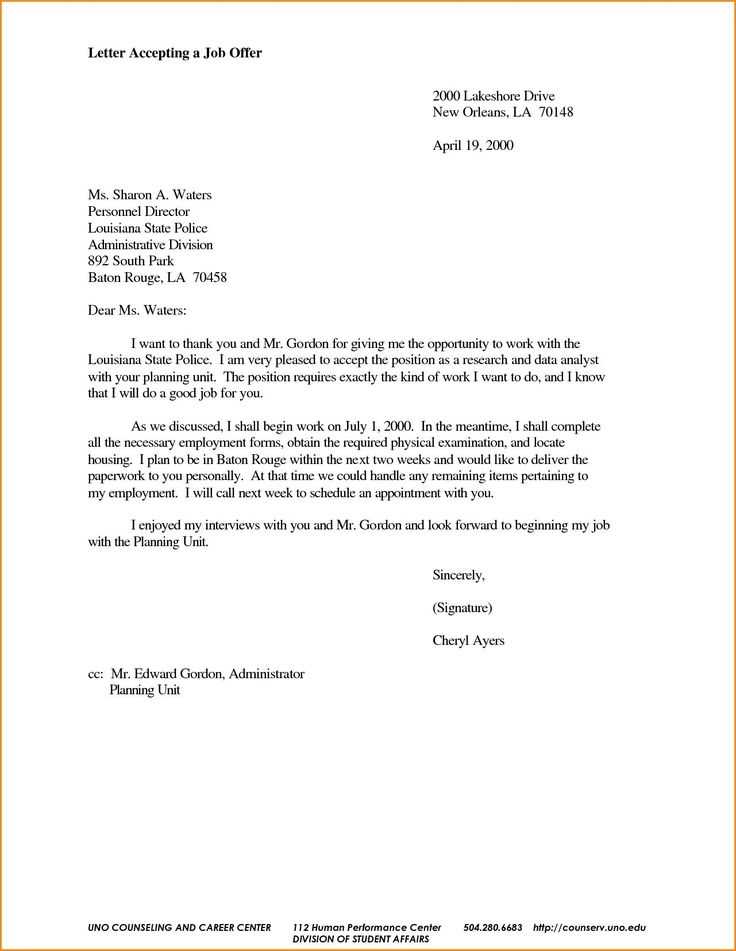
When you receive a job invitation, it’s crucial to respond in a clear and professional manner. Your response not only confirms your decision but also sets the tone for your future relationship with the employer. Crafting a well-written reply can leave a lasting impression and demonstrate your enthusiasm for the role.
In this section, we’ll guide you through the essential elements of crafting a thoughtful response. Whether you’re excited about the role or need more clarification before committing, understanding how to structure your response is key to making a positive impact. A well-composed reply shows your professionalism and respect for the opportunity presented.
Mastering the right approach can make a difference in how your new employer perceives you. An effective reply not only communicates your acceptance but also reinforces your suitability for the position. By focusing on important details and maintaining a positive tone, you ensure that your response aligns with professional standards and expectations.
Understanding the Importance of Acceptance Emails
Responding to a job proposal in a professional and timely manner is an essential step in securing a new position. A well-constructed reply not only shows your commitment but also reflects your communication skills and professionalism. It’s your chance to confirm the terms of your future role while demonstrating respect for the hiring process.
Establishing Professional Relationships
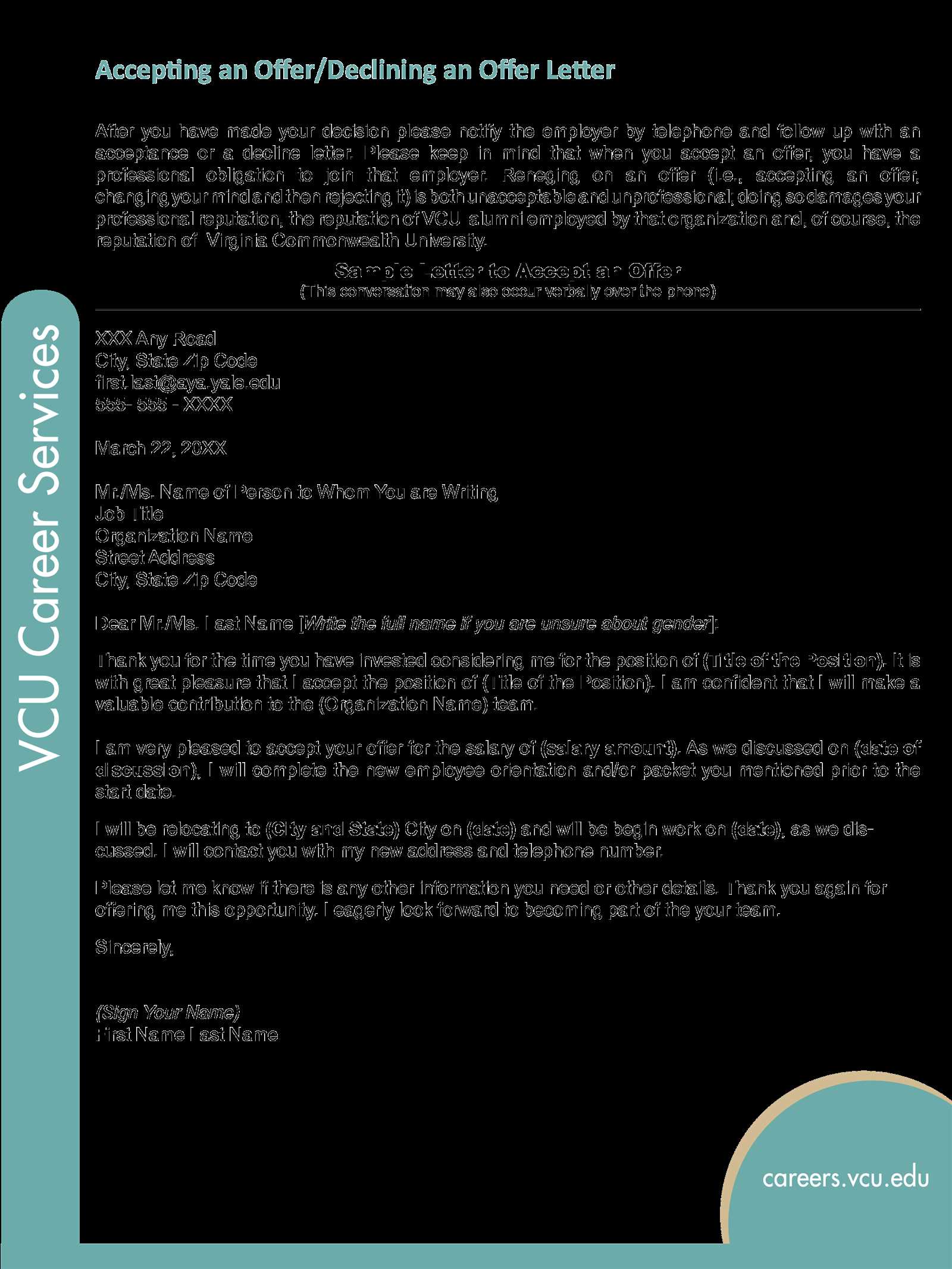
By sending a clear and courteous response, you set the tone for your relationship with your future employer. This first official interaction demonstrates your attention to detail and your readiness to engage in a positive work environment. A prompt and thoughtful reply helps establish mutual respect and trust from the start.
Ensuring Clarity and Avoiding Misunderstandings
Confirming key details in your response helps prevent any confusion regarding terms and expectations. Addressing specific elements, such as start dates and job responsibilities, ensures both you and your employer are aligned. This clarity is crucial for a smooth transition into your new role and contributes to long-term success in your position.
Key Components of a Job Offer Response
When crafting your reply to a job invitation, several essential elements should be included to ensure your message is both professional and clear. Each part of your response plays a crucial role in confirming your decision and reinforcing your commitment to the position. A well-structured response helps avoid misunderstandings and sets the right expectations for both parties.
Confirmation of Acceptance is the core of your message. Clearly stating that you are ready to move forward with the role provides both you and the employer certainty. This part should be direct, leaving no room for ambiguity about your intentions.
Express Gratitude for the opportunity. Acknowledge the offer and thank the employer for considering you for the position. A brief note of appreciation for the company’s confidence in your abilities reinforces a positive relationship and sets a respectful tone.
Clarify Details such as start dates, salary, and any other relevant terms if necessary. Reconfirming these specifics ensures everyone is on the same page, preventing any potential confusion before your first day on the job.
Professional Closing is equally important. A polite sign-off, reinforcing your excitement for the upcoming role and expressing eagerness to start, leaves the employer with a positive impression and finalizes your response in a courteous and professional manner.
htmlEdit
Best Practices for Writing Professional Emails
Crafting a clear, respectful, and concise message is key when communicating in a business environment. Every correspondence serves to create or maintain professional relationships, and the tone you set plays an important role in how your message is perceived. By following certain standards, you can ensure your communication is both effective and courteous.
1. Start with a Clear Subject Line
The subject line is your first opportunity to convey the purpose of your message. A well-written subject line can grab attention and provide a hint of what is to come. Keep it brief and to the point.
- Avoid vague phrases like “Hello” or “Important”.
- Be specific about the content or reason for writing, e.g., “Request for Meeting Schedule” or “Follow-up on Discussion.”
- Keep it short to avoid overwhelming the reader, ideally under 8-10 words.
2. Use a Professional Tone
The language you use sets the tone for the message. Always remain polite and formal, especially when corresponding with colleagues or clients you don’t know well.
- Avoid slang, emojis, or overly casual language.
- Opt for a neutral, respectful approach even when addressing difficult topics.
- Ensure your sentences are clear and free from unnecessary jargon.
3. Stay Concise and to the Point
Professionals often have limited time to read through lengthy messages. Respect their time by staying focused and including only relevant information.
- Break up longer messages into smaller paragraphs for easier reading.
- If possible, use bullet points to highlight key information.
- Ensure your main points are easy to identify without excessive detail.
4. Proofread Before Sending
Small errors in grammar or spelling can undermine the professionalism of your message. Always take a moment to review your correspondence before sending it off.
- Check for common spelling or punctuation mistakes.
- Ensure the recipient’s name is spelled correctly.
- Read through your message to make sure it flows logically and maintains clarity.
htmlEdit
How to Express Gratitude in Your Reply
When responding to a professional proposal, expressing appreciation is essential to maintain a positive and respectful relationship. A sincere acknowledgment of the opportunity shows enthusiasm and professionalism. It’s important to communicate gratitude in a manner that feels genuine while remaining concise and clear.
1. Be Specific About What You Appreciate
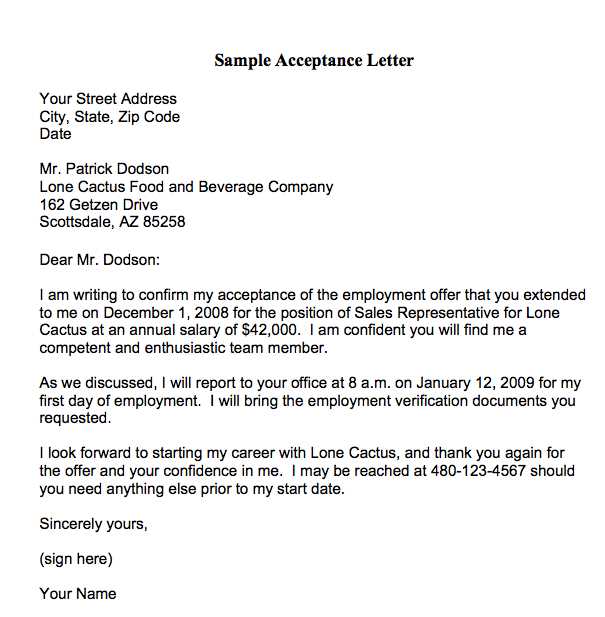
General expressions of thanks may come across as insincere. To make your response stand out, mention particular aspects of the offer or process that you value.
- Example: “I am truly grateful for the opportunity to work with such a respected team.”
- Example: “Thank you for the comprehensive details about the role and expectations.”
2. Acknowledge Efforts or Time Invested
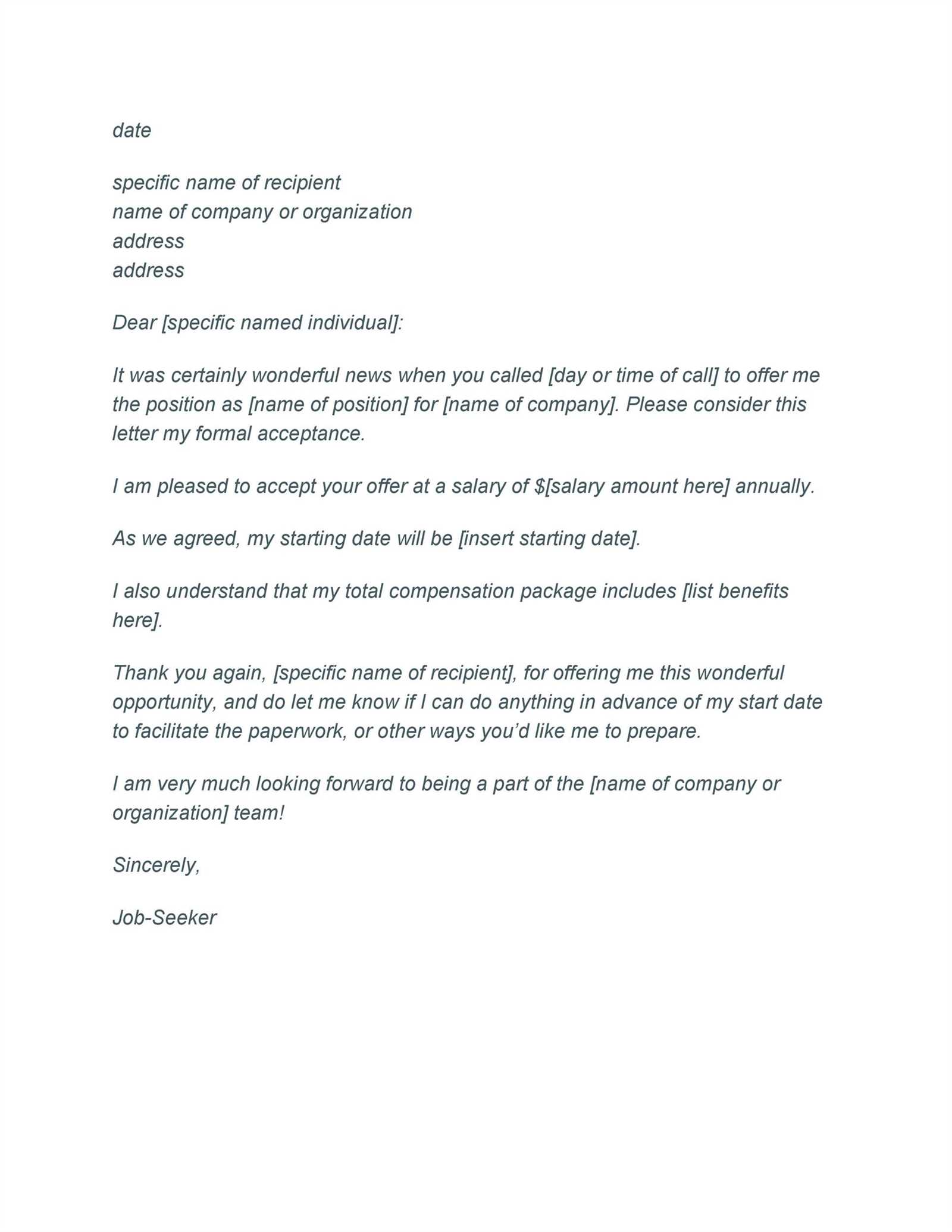
When responding, it’s thoughtful to recognize the time and effort someone has dedicated to communicating with you. This shows that you respect the process and the person behind the offer.
- Example: “I appreciate the time you took to answer my questions and clarify the next steps.”
- Example: “Your consideration and thorough explanation mean a great deal to me.”
3. Convey Excitement and Anticipation
In addition to showing gratitude, expressing eagerness about moving forward will highlight your enthusiasm for the opportunity.
- Example: “I look forward to joining the team and contributing to its success.”
- Example: “I am excited to start and can’t wait to be part of such an innovative environment.”
htmlEdit
Avoiding Common Mistakes in Acceptance Emails
When confirming your decision to join a professional opportunity, it’s essential to communicate clearly and avoid pitfalls that could impact your relationship with the company. A carefully crafted response ensures you convey your appreciation and commitment while maintaining professionalism.
1. Failing to Confirm Key Details
Leaving important aspects of the role unclear can lead to confusion later. Be sure to confirm the details discussed, such as start dates or any specific terms mentioned during negotiations.
| Mistake | Solution |
|---|---|
| Not confirming start date | Clearly mention your expected start date to avoid confusion. |
| Uncertainty about terms | Restate agreed-upon terms to ensure both parties are aligned. |
2. Using an Informal Tone
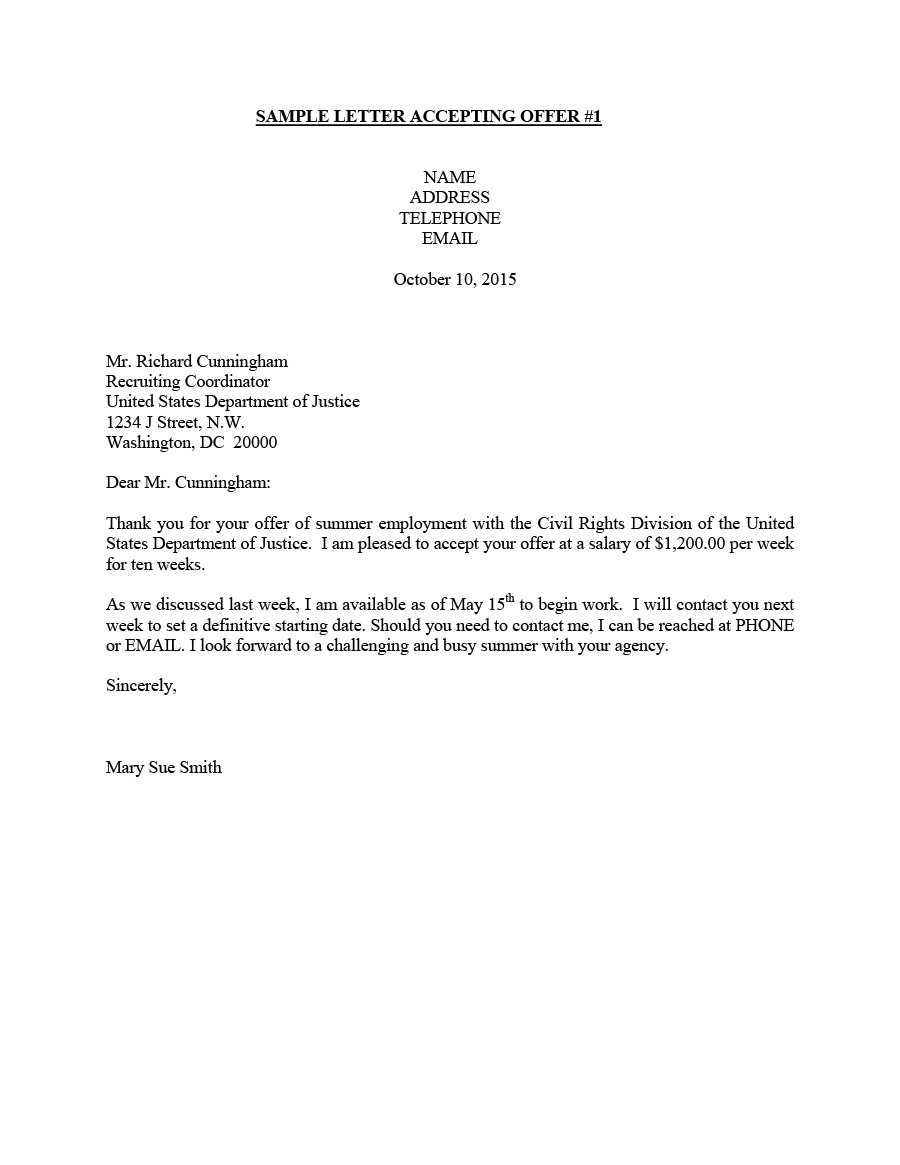
While it’s important to sound warm and friendly, adopting an overly casual tone can be perceived as unprofessional. Stick to a polite and formal style to show respect for the opportunity.
3. Overlooking Proofreading
Sending a response with spelling or grammatical errors can detract from your professionalism. Always take a moment to review your correspondence before finalizing it.
| Mistake | Solution |
|---|---|
| Spelling mistakes | Read through your response carefully or use grammar-checking tools. |
| Incorrect formatting | Ensure your message is well-organized and easy to read. |
htmlEdit
Timing Your Response to the Offer
When responding to a professional proposal, it’s important to find the right balance between being prompt and giving yourself enough time to make a thoughtful decision. Rushing into a reply may lead to regrets, while waiting too long could give the impression of uncertainty or indecision.
1. Respond Promptly, but Thoughtfully
It’s essential to show your enthusiasm and respect for the opportunity by replying within a reasonable timeframe. However, ensure you have adequate time to review all details before committing.
- Tip: Aim to reply within 2-3 business days to demonstrate your interest and professionalism.
- Tip: Take time to carefully consider all aspects of the opportunity, but avoid unnecessary delays.
2. Allow Time for Discussion or Negotiation
If there are terms or details you’d like to clarify or discuss, don’t hesitate to ask for more time. Ensure that you communicate your request politely and professionally, while making it clear you are still interested in moving forward.
- Tip: Politely request additional time for evaluation if necessary, such as, “I would appreciate a few extra days to review the details thoroughly.”
- Tip: Avoid last-minute requests for extensions, as they may come across as disorganized or indecisive.
3. Avoid Procrastination
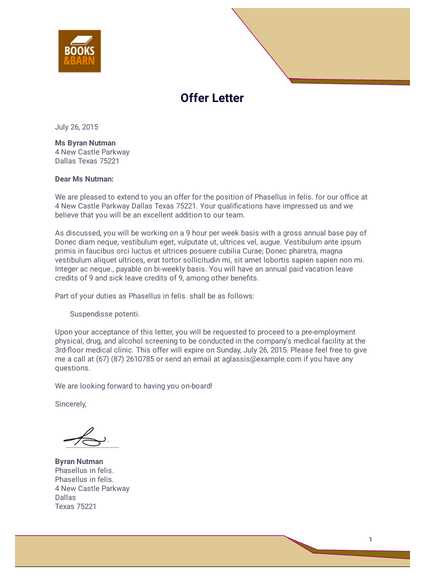
While it’s important to be thorough, dragging out your response for too long can reflect poorly. A delayed reply may cause frustration or doubts about your commitment.
- Tip: Make your decision within the timeframe provided to show your readiness and respect for their process.
- Tip: If you require more time, ensure that you provide a specific date when you will respond.